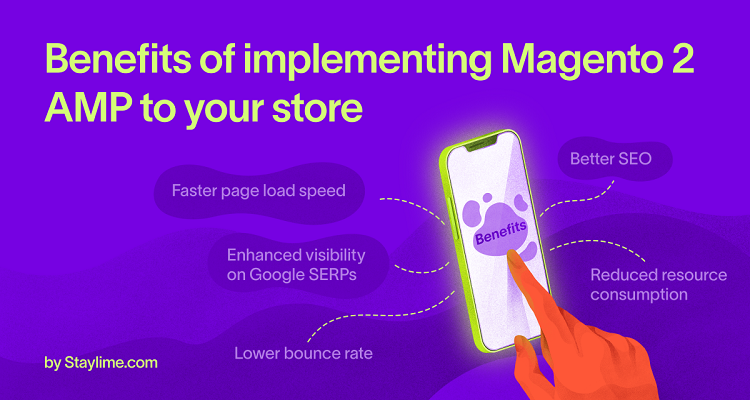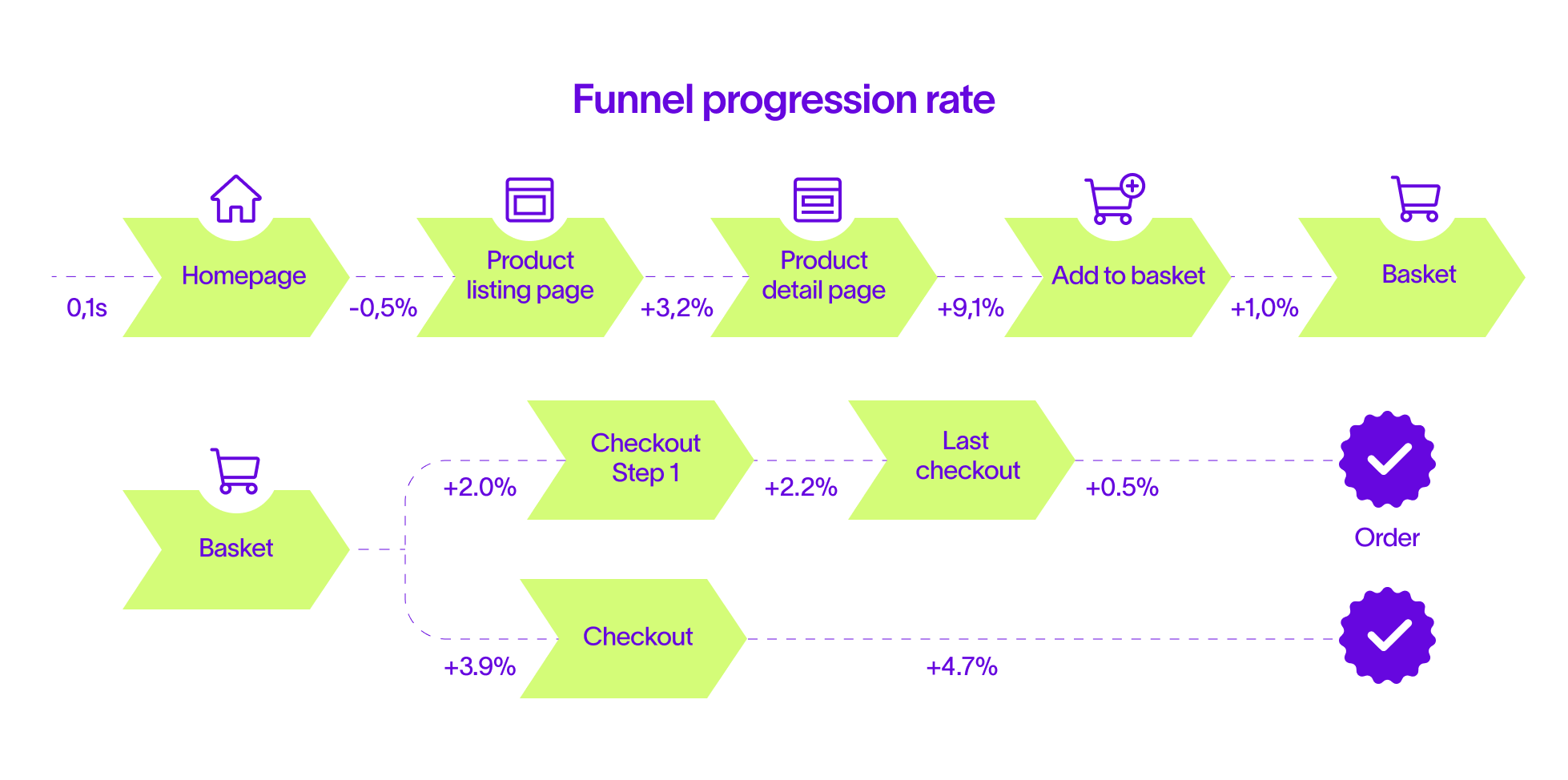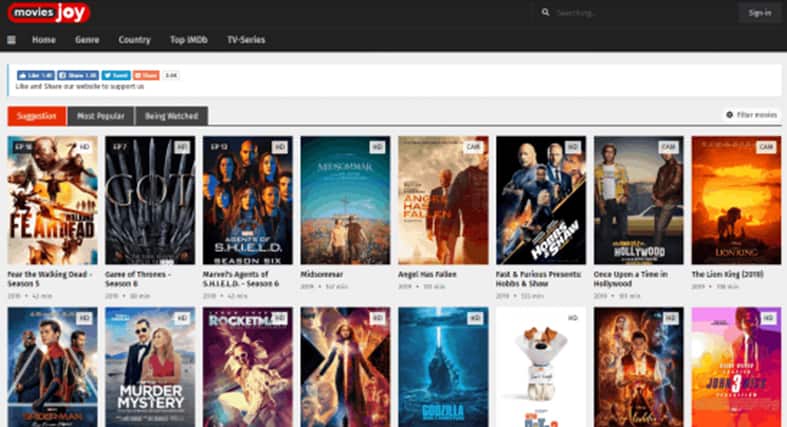According to a study conducted by Deloitte LLP, mobile site speed significantly impacts an ecommerce business’s consumer engagement and conversion rates. As little as a 0.1–second improvement in a mobile website load time has the potential to boost the progression rate across the consumer purchase cycle by nearly 10%.
Merchants using Magento to power their online operations enjoy some of the world’s most advanced ecommerce functionality thanks to the platform. But when you’re competing with global businesses, a mobile responsive website isn’t enough. You need to be at the top of your game to ensure you’re giving your business the best chance to succeed.
In 2015, Google launched the Accelerated Mobile Pages (AMP) Project to improve the performance of websites on mobile devices. However, many retailers avoid using it on their websites because they believe that an AMP page is incapable of supporting their website’s style and functionality, compromising their Magento UI design efforts.
While some of their concerns were valid when AMP was launched, it has come a long way since its inception. It is now capable of delivering both performance and functionality to its users. AMP pages can integrate with inventory systems for live stock updates and even showcase real-time pricing.
To understand the benefits of implementing AMP on your Magento store, you must first understand how it works.
How AMP improves page performance
AMP accelerates page load times by systematically optimizing all aspects of the page layout and rendering process to maximize efficiency. It’s essentially a framework comprising of three parts:
- AMP HTML
This is a slightly restrictive subset of HTML that comprises custom tags and properties.
- AMP JS
This is a JavaScript framework that manages resources and asynchronous loading for AMP pages. It does not contain any third-party or custom JavaScript.
- AMP CDN
This is an optional content delivery network that caches and delivers AMP-enabled pages to end users.
Using these, AMP improves page performance in the following ways:
- Executes all AMP JavaScript asynchronously and only allows custom JavaScript to load inside iframes. By doing this, it ensures that they don’t block the rendering of the main page.
- Sizes all external resources such as images, ads, and iframes statically by requiring each element’s size inside the HTML of the page. Doing this allows it to load the page layout without waiting for external resources and only requires a single HTTP request to load the entire page document and its font.
- Optimizes the web font loading process by delaying the declaration of HTTP requests until fonts begin loading, unlike the standard method where a browser waits to download fonts, which add to the page load time.
- Forces animation-related CSS to be executed by the GPU instead of the browser as it is more capable of handling them efficiently. Moreover, AMP restricts the application of animations and transitions to opacity and transform. This prevents layout adjustments during page load which is a task that’s executed by the browser and one that can be detrimental to page performance.
- Minimizes the style recalculations that occur during page load by forcing DOM reads to happen before writes. This allows AMP pages to ensure only one style recalculation occurs per frame.
- Takes control of all resource downloads and prioritizes them to only load what’s needed while prefetching lazy-loaded resources. Things like ads and images are only loaded if they are above the fold or likely to be seen by the user.
- Uses a preconnect API to load HTTP requests. This allows pages to be loaded only when users indicate that they wish to navigate to them. Prerendering resources only when required helps reduce bandwidth and CPU usage.
Five benefits of implementing Magento 2 AMP
Improves page load speed
One of the most obvious benefits of implementing Magento 2 AMP is a significant boost in page load speed. Although Magento websites are known to be fast thanks to their powerful caching, they can achieve page load speeds as low as 0.5 seconds when coupled with AMP.
From executing JavaScript asynchronously and sizing external resources statically to prioritizing loading of bulky web fonts and only running GPU-accelerated animations, AMP ensures that every aspect of the page layout and rendering is completely optimized to ensure the fastest load times.
A fast-loading website boosts the end-user experience and directly impacts both the website conversions and its customer retention. Put simply, implementing AMP on your Magento website will directly improve your company’s bottom line.
Enhances visibility on Google SERPs
Another significant advantage of implementing AMP on your Magento 2 store is the enhanced appearance on the Google search results page. Pages that support AMP are displayed with an additional lightning bolt icon in Google search.
Magento’s default product template contains structured data markup based on Schema.org standards that helps Google display enhanced product listings using additional data. In combination with AMP, these rich snippets will boost your website’s visibility in organic search listings.
Lowers bounce rate
Google has consistently maintained its focus on page performance. More recently, as a part of theWeb Vitals initiative, they’ve emphasized three critical aspects that contribute to the user experience on a website:
- Largest Contentful Paint (LCP),
- First Input Delay (FID),
- Cumulative Layout Shift (CLS).
By uncoupling document layout from the resource layout, AMP can load a page without waiting for its resources to download in a single HTTP request. And with predefined resource sizes, there are no unnecessary style recalculations or layout changes during the page rendering, saving precious time and resources while helping your website pages load instantly.
This can help Magento store owners achieve some of the lowest CLS scores while also achieving lightning-fast LCP and FID scores when using AMP.
Improves SEO
When you have a website that not only loads fast but also has a lower bounce rate and better visibility on Google’s SERPs, you’re likely to see an improvement in your website’s overall organic rankings.
AMP supports extensions for lightboxes, tweets, and Instagram embeds. Although these require additional HTTP requests, they do not adversely affect the page layout and rendering. It achieves this using custom tags that allow the creation of iframe boxes even without knowing their contents.
Coupled with Magento’s inbuilt SEO functionality, AMP can significantly further your store’s SEO goals while allowing you to leverage social media effectively.
Reduces resource consumption
The primary focus behind the development of AMP has always been to improve the performance of websites on mobile devices. Over time, its developers have fine-tuned the technology to become increasingly efficient by improving its data usage and increasing its performance.
By caching all assets, including JavaScript, HTML, and CSS, and serving them from Google’s CDN, AMP allows its users to leverage Google’s servers to serve content reducing the load on their servers. This means only dynamic assets are loaded from the origin server while all static content is prerendered and delivered through Google’s CDN.
Even when a page is prerendered for instant loading, only the content that’s above the fold is downloaded, whereas CPU-heavy resources like third-party iframes aren’t downloaded.
How to implement AMP on your Magento store
AMP can provide a significant performance boost and improve otherwise lackluster conversions. However, Magento 2 doesn’t support AMP natively, making it difficult for Magento users to leverage the technology on their online stores.
There are two ways in which Magento users can implement AMP on their stores:
- Custom development
The best way to implement Magento 2 AMP on your store is by seeking a Magento development company to build AMP versions of your website’s pages. To be compatible with AMP, you need to manually override the standard templates inside Magento with those that don’t contain any prohibited tags or other attributes.
AMP’s HTML library comprises over a hundred components that allow you to recreate your website’s existing functionality on the AMP page. No matter if you have custom forms, integrated inventory systems, or dynamic pricing, using the AMP components, you can easily retain most of your website’s existing functionality.
- Third-party extensions
If you find the costs of custom development too high, you can also opt for ready-to-use third-party extensions. Magento teamed up with WompMobile to develop an open-source extension available on GitHub that provides a basic template for Magento product pages consisting of a valid AMP markup.
The open-source extension offers minimal functionality and only delivers essential product information for the store on its AMP pages. For a more comprehensive solution, you can access one of the many ready-to-use paid extensions on the market that have been developed by well-known Magento extension companies.
It’s worth noting, however, that ready-to-use extensions aren’t always capable of supporting custom themes. Most are developed using either the standard Blank or Luma themes or popular third-party Magento themes like Porto. It would be wise to check with the extension developers for compatibility with your website’s theme before making your purchase.
Implementing Magento 2 AMP delivers results
The benefits of implementing Magento 2 AMP go well beyond site performance. As a store owner, you’re likely to see an improvement in your search engine performance, a reduction in your website’s bounce rate, and even an increase in the conversion rates.
Especially when integrated with Magento PWA, you can create a highly-flexible yet ultra-fast Magento website that’s capable of out-performing your competitors while still being compatible with a multitude of mobile and tablet devices.
As far as technologies go, AMP is relatively new. However, based on its track-record, it shows a lot of promise and can be an excellent asset for Magento store owners.
Author: Jan Guardian
Jan is the Chief Business Development Officer at Staylime, a Magento design and development company headquartered in Redwood City, California. He is a Member of the Magento Association and an Adobe Sales Accredited Magento Commerce professional. Jan is responsible for developing and leading the sales and digital marketing strategies of the company. He is passionate about ecommerce and Magento in particular — throughout the years his articles have been featured on Retail Dive, Hacker Noon, Chief Marketer, Mobile Marketer, TMCnet, and many others.









Add Comment